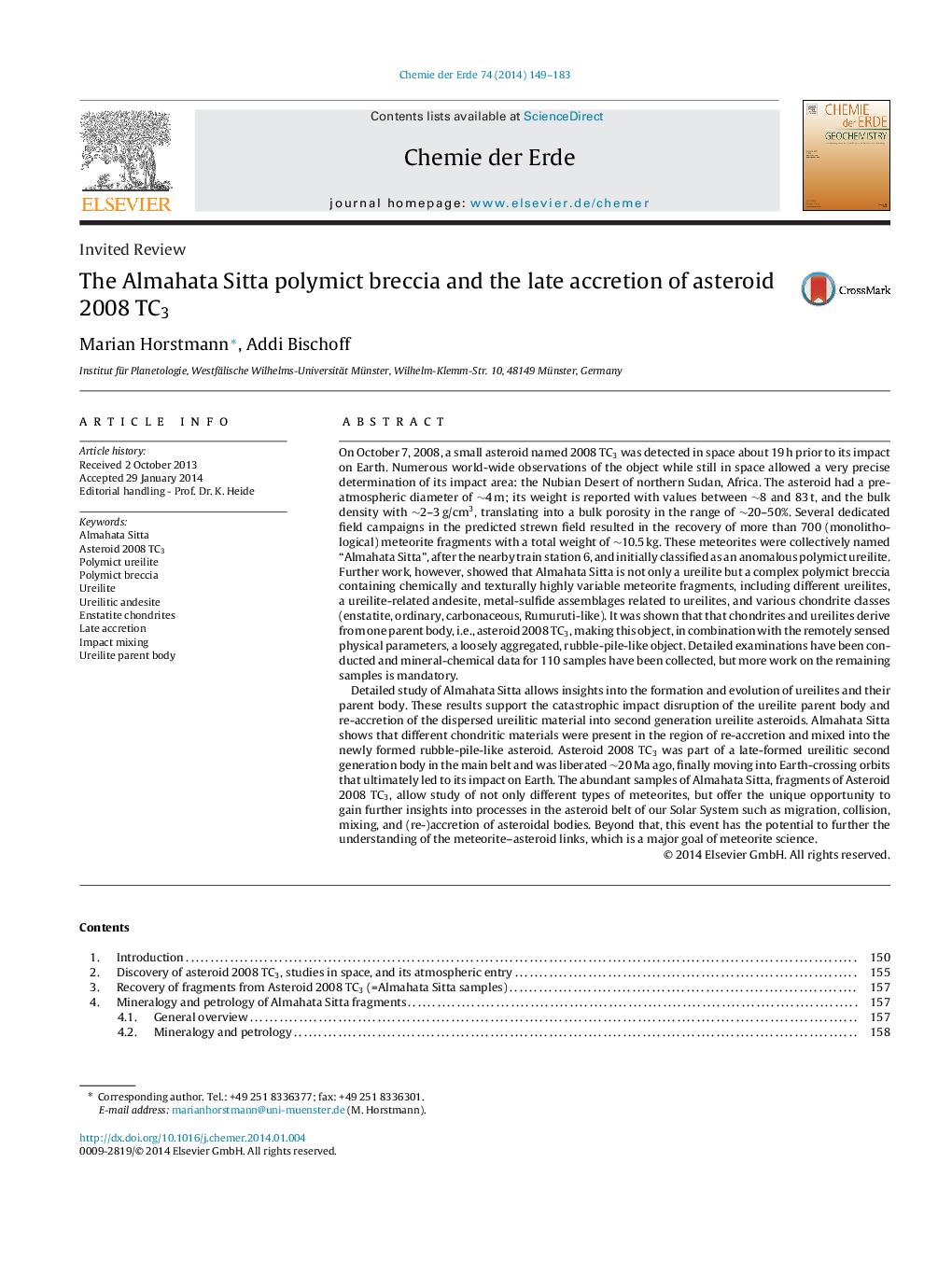| کد مقاله | کد نشریه | سال انتشار | مقاله انگلیسی | نسخه تمام متن |
|---|---|---|---|---|
| 4406925 | 1307332 | 2014 | 35 صفحه PDF | دانلود رایگان |

On October 7, 2008, a small asteroid named 2008 TC3 was detected in space about 19 h prior to its impact on Earth. Numerous world-wide observations of the object while still in space allowed a very precise determination of its impact area: the Nubian Desert of northern Sudan, Africa. The asteroid had a pre-atmospheric diameter of ∼4 m; its weight is reported with values between ∼8 and 83 t, and the bulk density with ∼2–3 g/cm3, translating into a bulk porosity in the range of ∼20–50%. Several dedicated field campaigns in the predicted strewn field resulted in the recovery of more than 700 (monolithological) meteorite fragments with a total weight of ∼10.5 kg. These meteorites were collectively named “Almahata Sitta”, after the nearby train station 6, and initially classified as an anomalous polymict ureilite. Further work, however, showed that Almahata Sitta is not only a ureilite but a complex polymict breccia containing chemically and texturally highly variable meteorite fragments, including different ureilites, a ureilite-related andesite, metal-sulfide assemblages related to ureilites, and various chondrite classes (enstatite, ordinary, carbonaceous, Rumuruti-like). It was shown that that chondrites and ureilites derive from one parent body, i.e., asteroid 2008 TC3, making this object, in combination with the remotely sensed physical parameters, a loosely aggregated, rubble-pile-like object. Detailed examinations have been conducted and mineral-chemical data for 110 samples have been collected, but more work on the remaining samples is mandatory.Detailed study of Almahata Sitta allows insights into the formation and evolution of ureilites and their parent body. These results support the catastrophic impact disruption of the ureilite parent body and re-accretion of the dispersed ureilitic material into second generation ureilite asteroids. Almahata Sitta shows that different chondritic materials were present in the region of re-accretion and mixed into the newly formed rubble-pile-like asteroid. Asteroid 2008 TC3 was part of a late-formed ureilitic second generation body in the main belt and was liberated ∼20 Ma ago, finally moving into Earth-crossing orbits that ultimately led to its impact on Earth. The abundant samples of Almahata Sitta, fragments of Asteroid 2008 TC3, allow study of not only different types of meteorites, but offer the unique opportunity to gain further insights into processes in the asteroid belt of our Solar System such as migration, collision, mixing, and (re-)accretion of asteroidal bodies. Beyond that, this event has the potential to further the understanding of the meteorite–asteroid links, which is a major goal of meteorite science.
Journal: Chemie der Erde - Geochemistry - Volume 74, Issue 2, June 2014, Pages 149–183